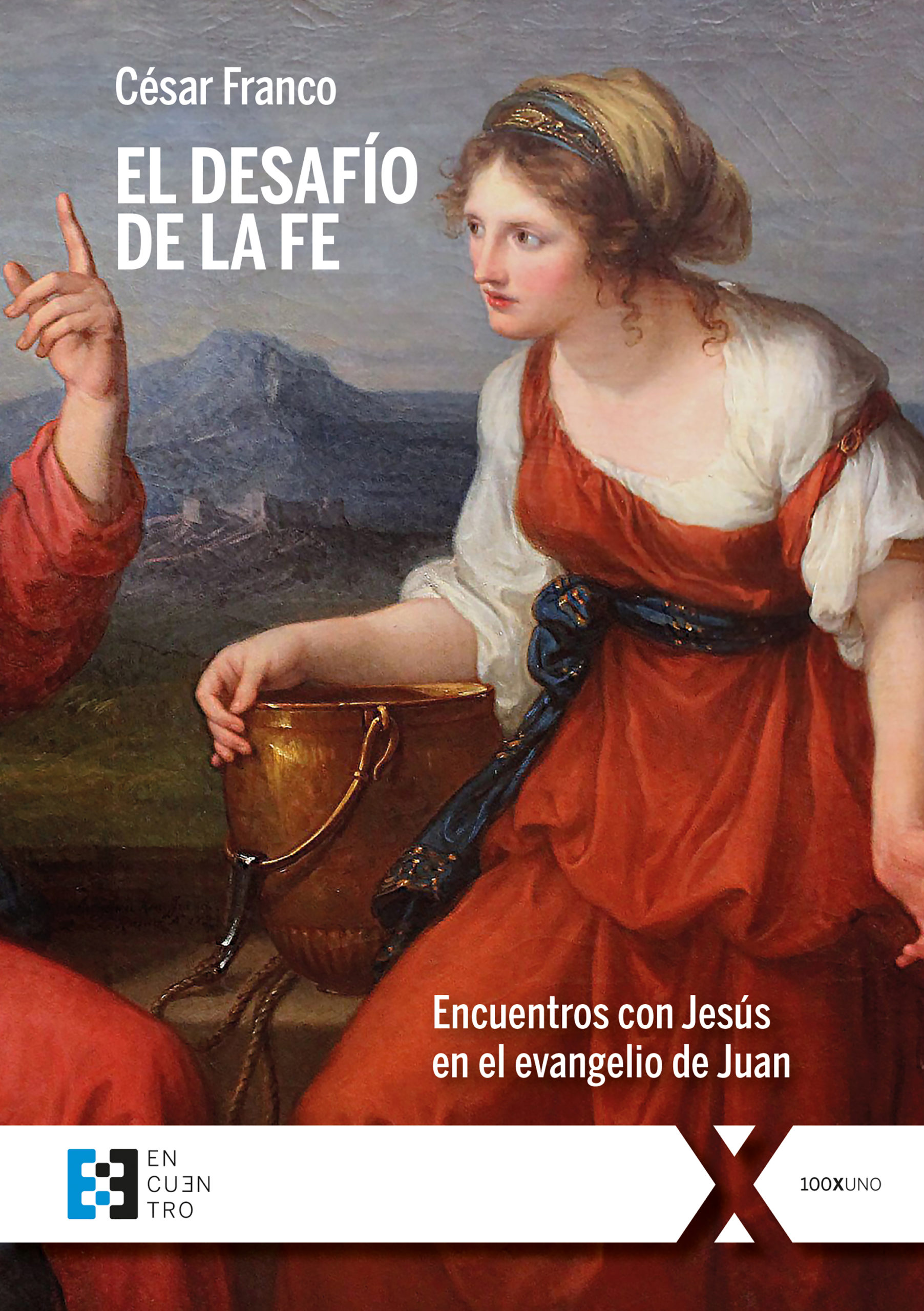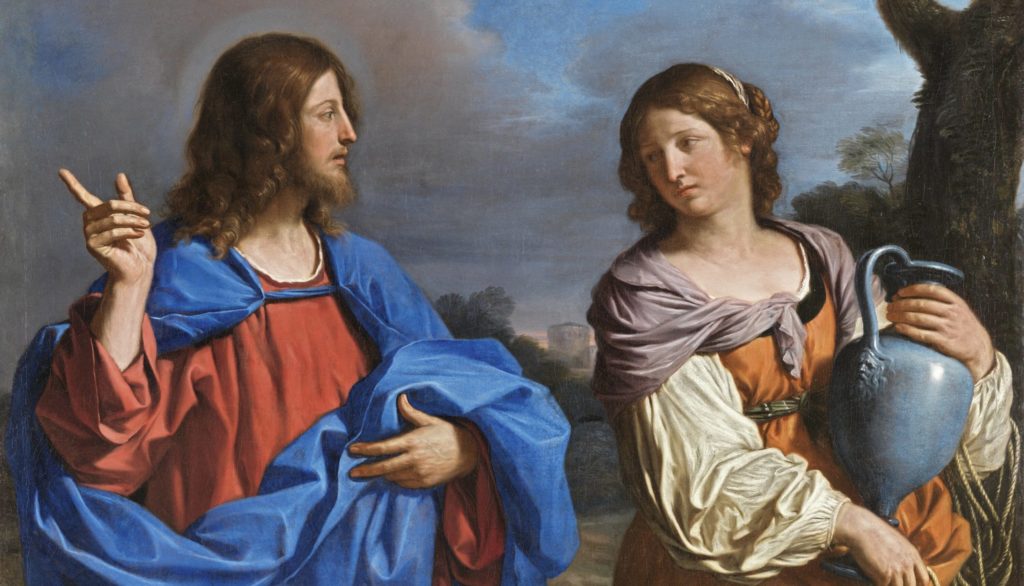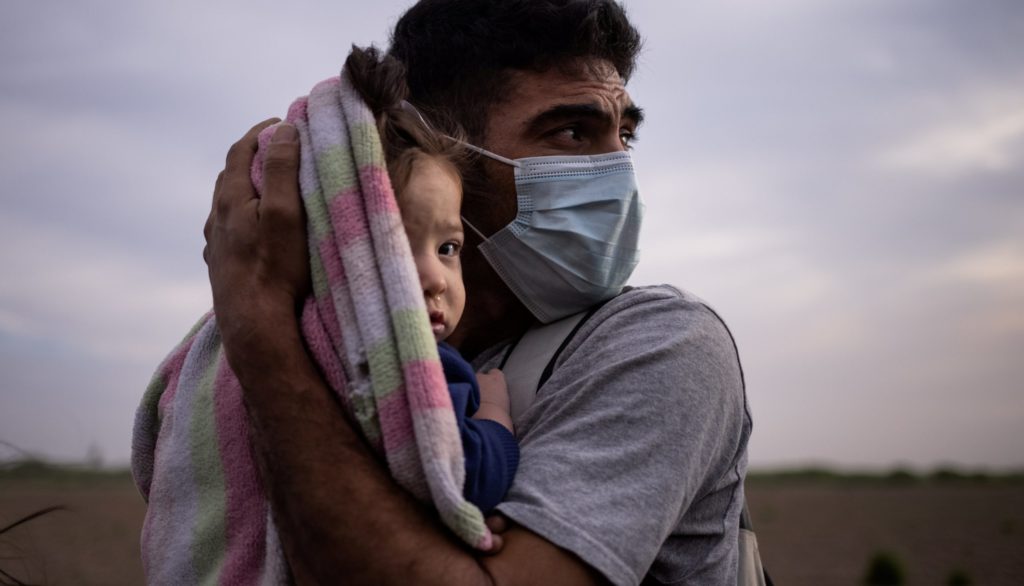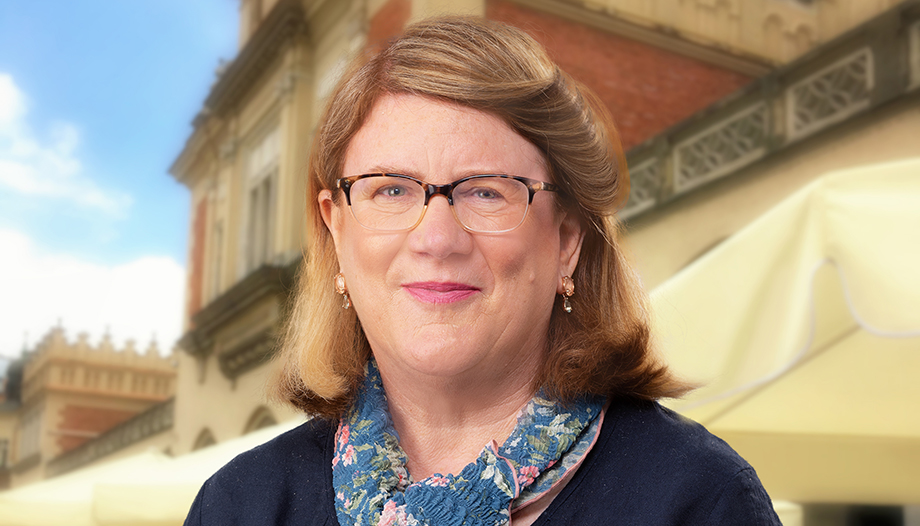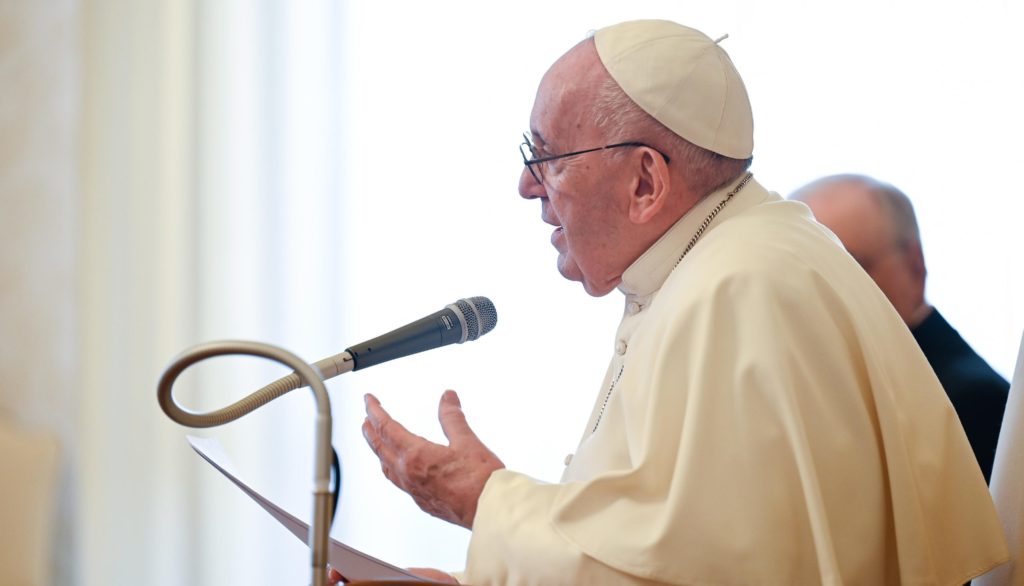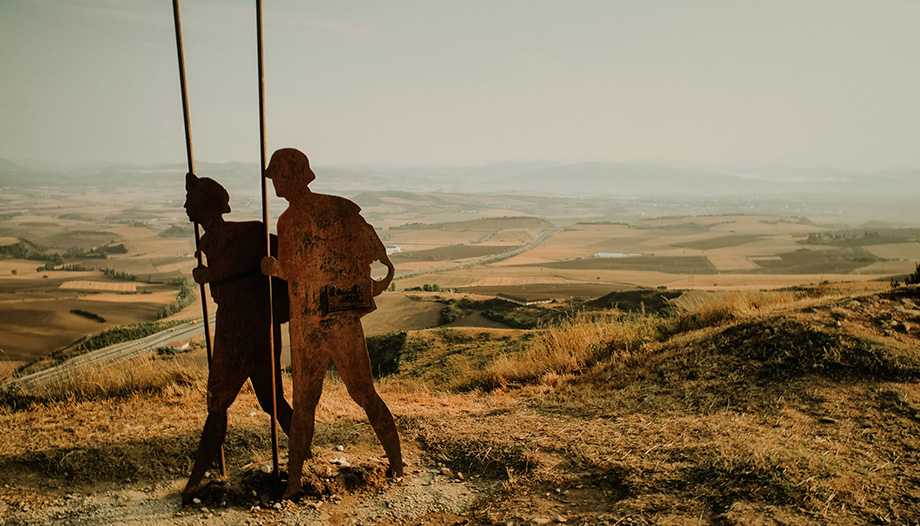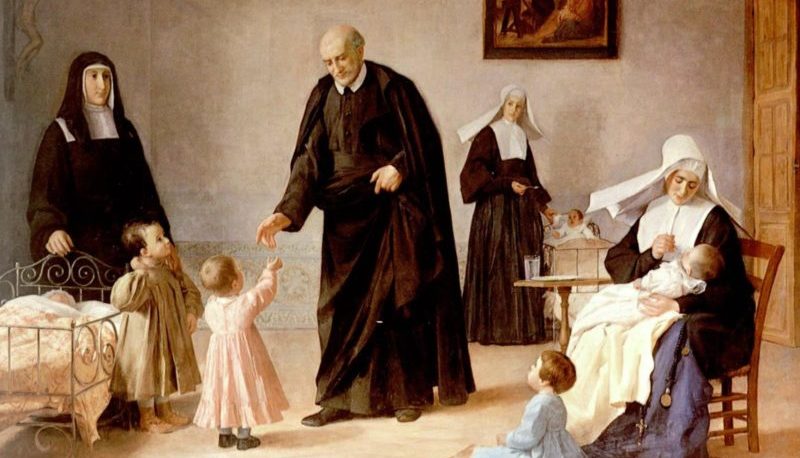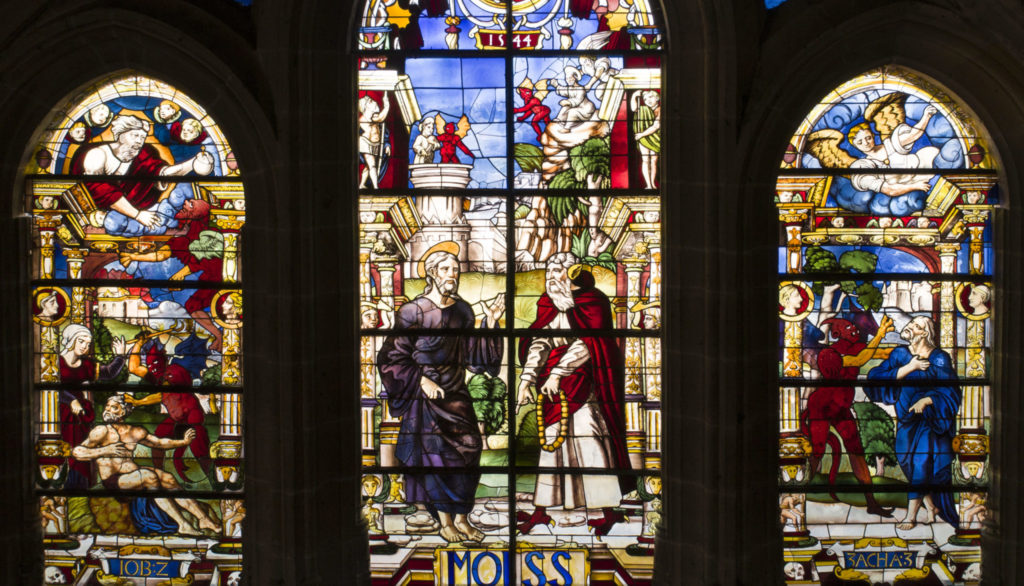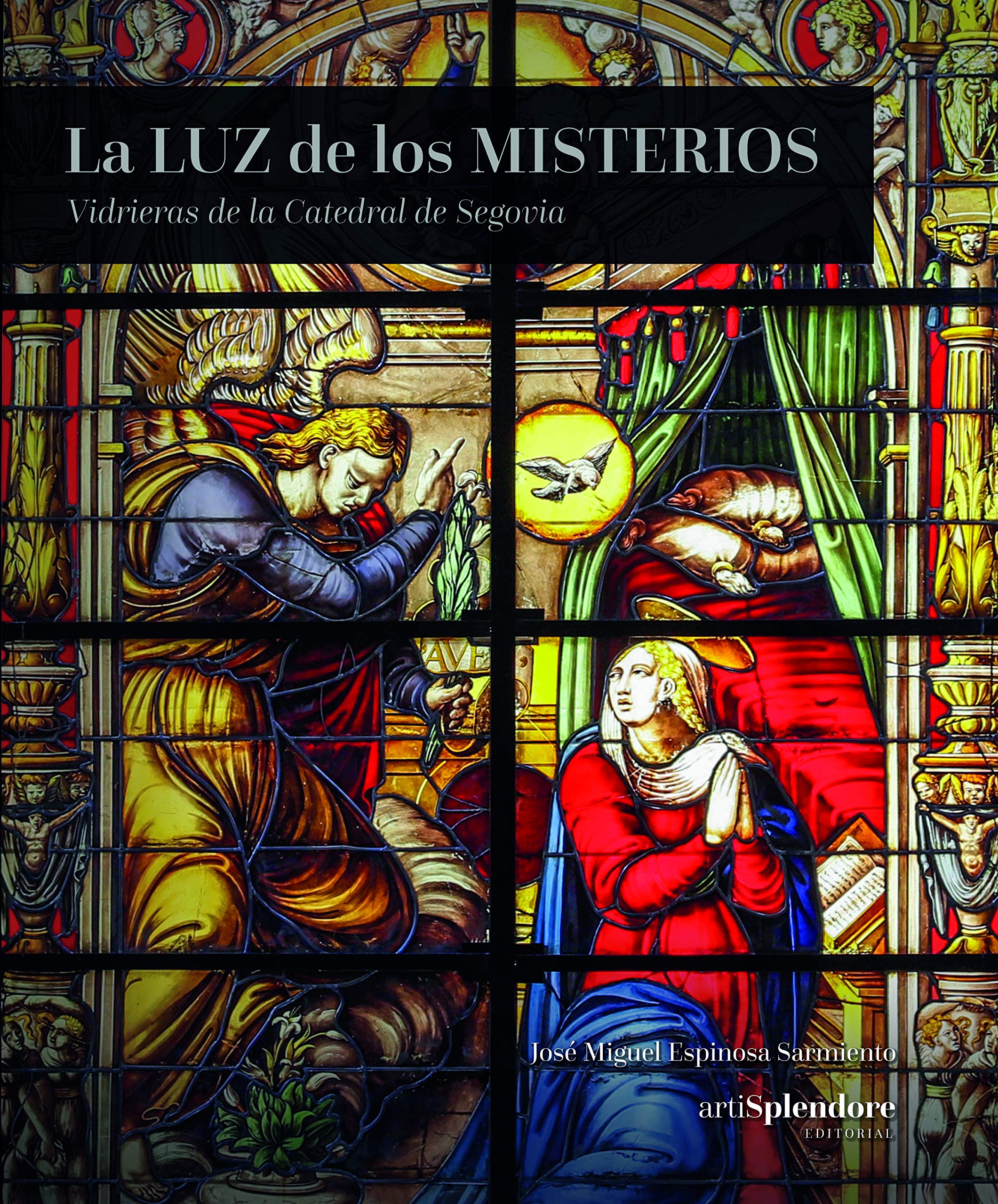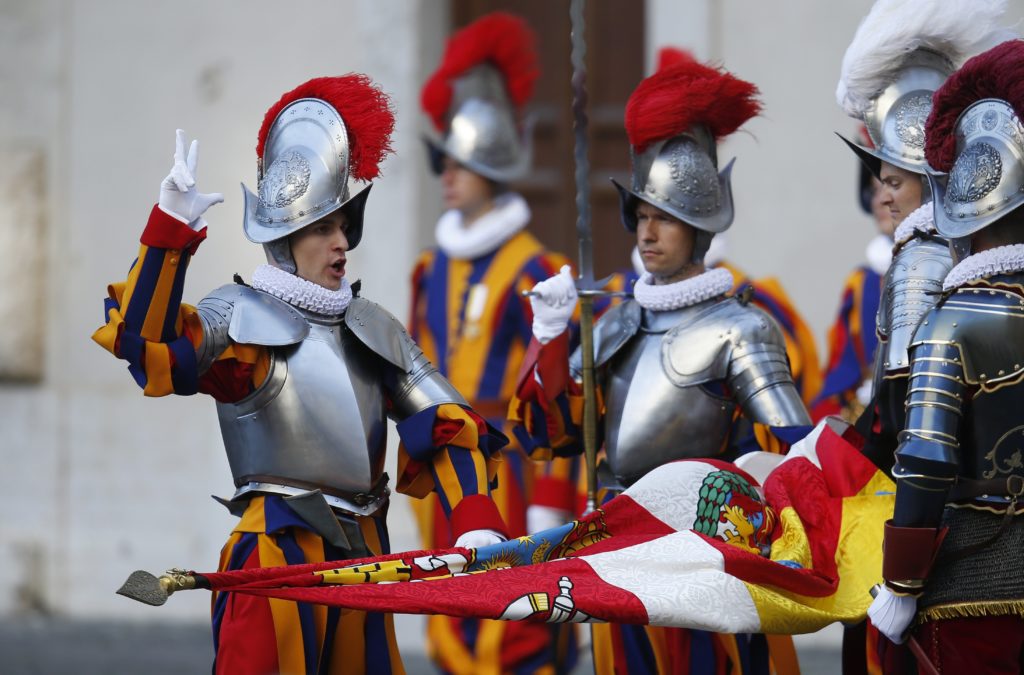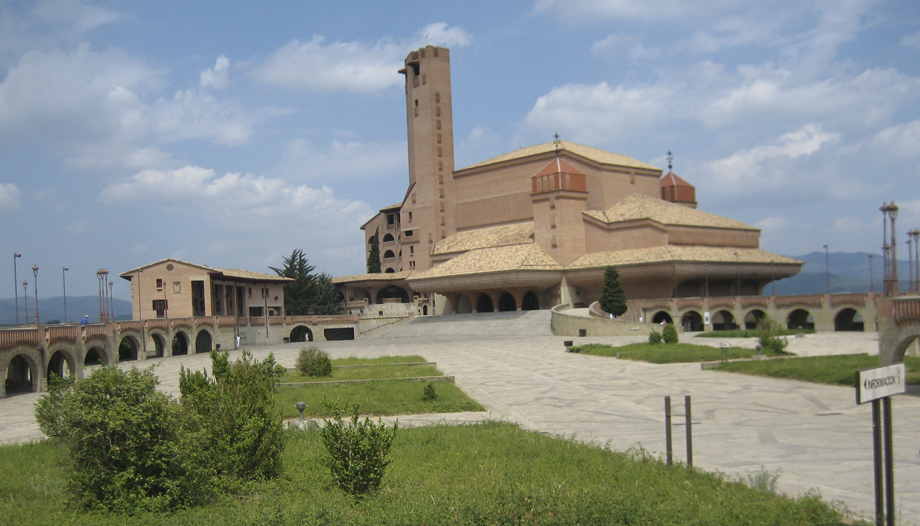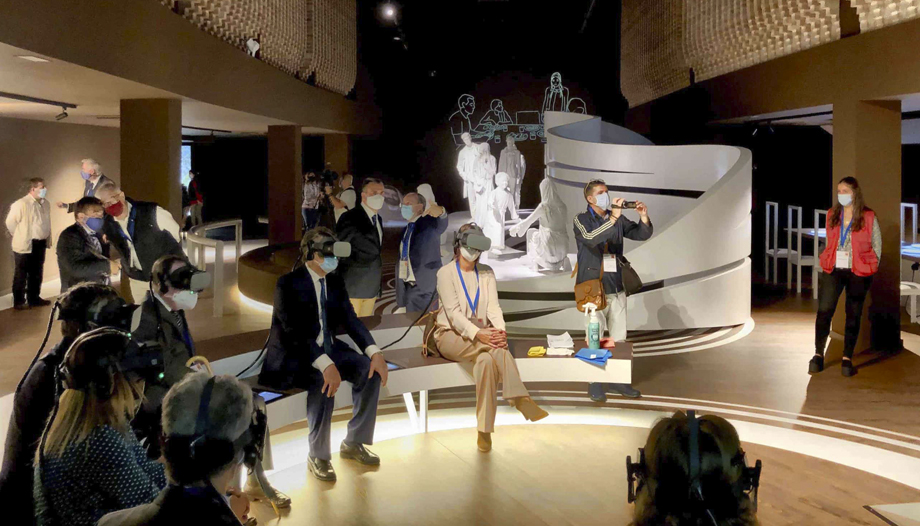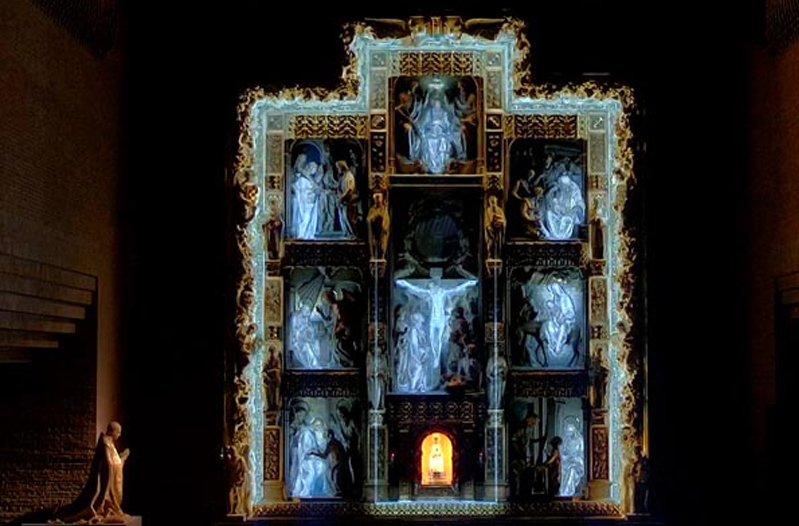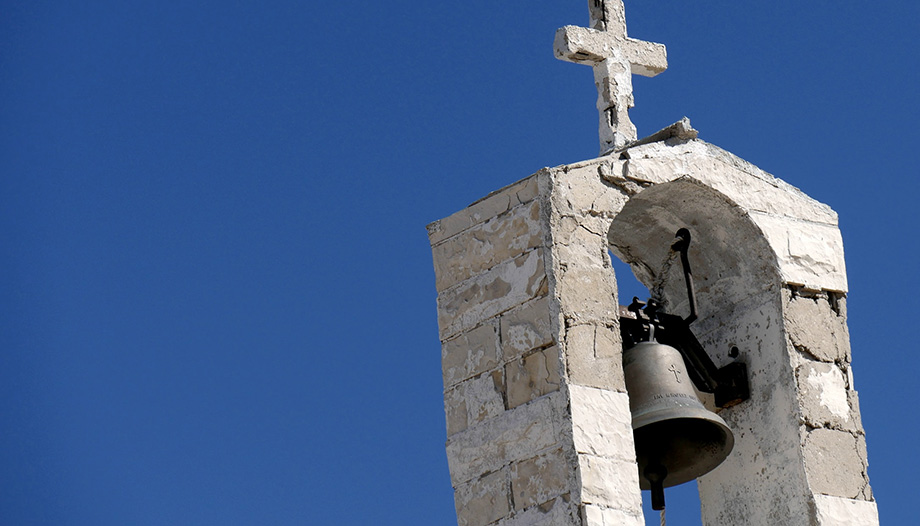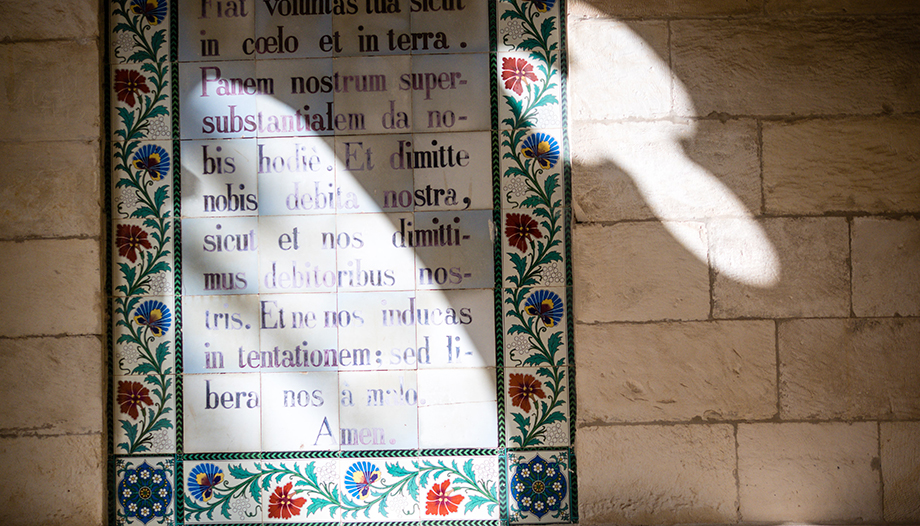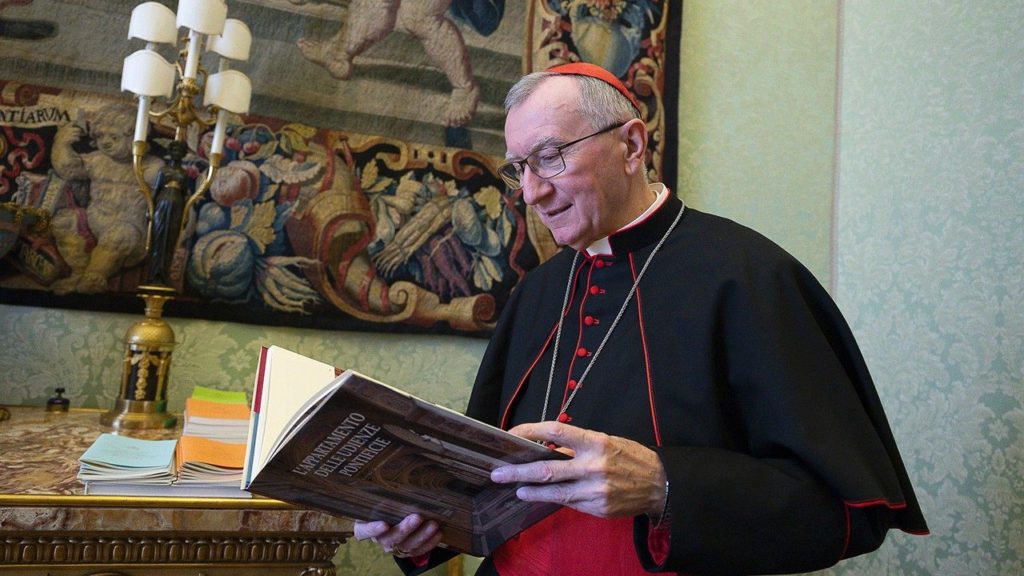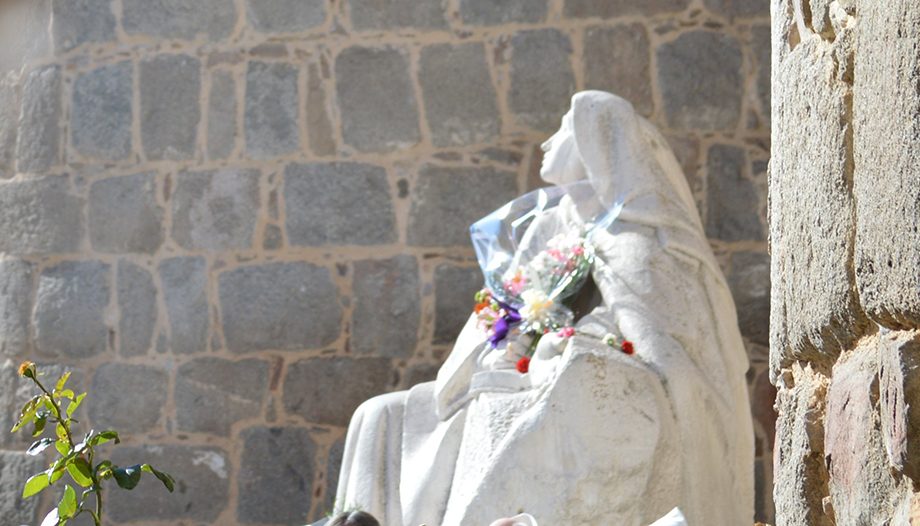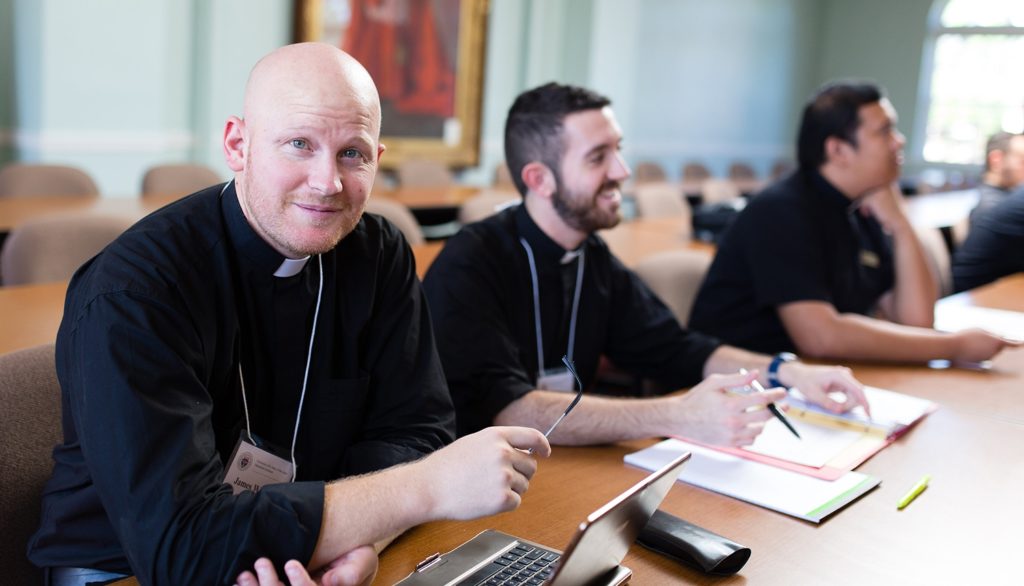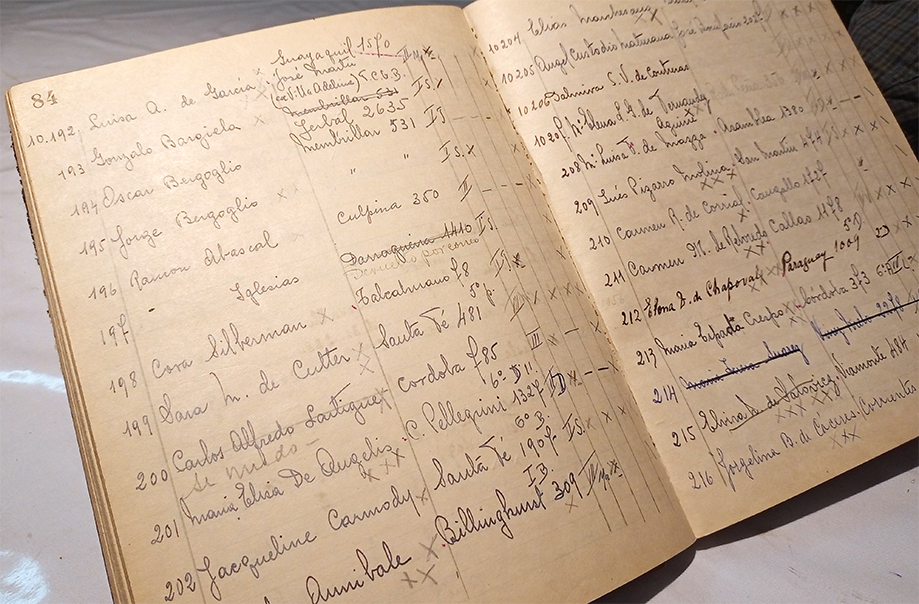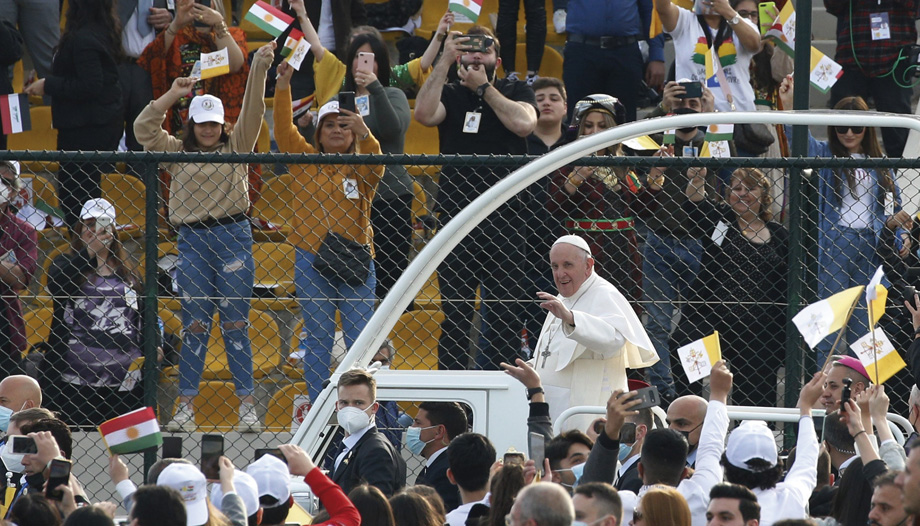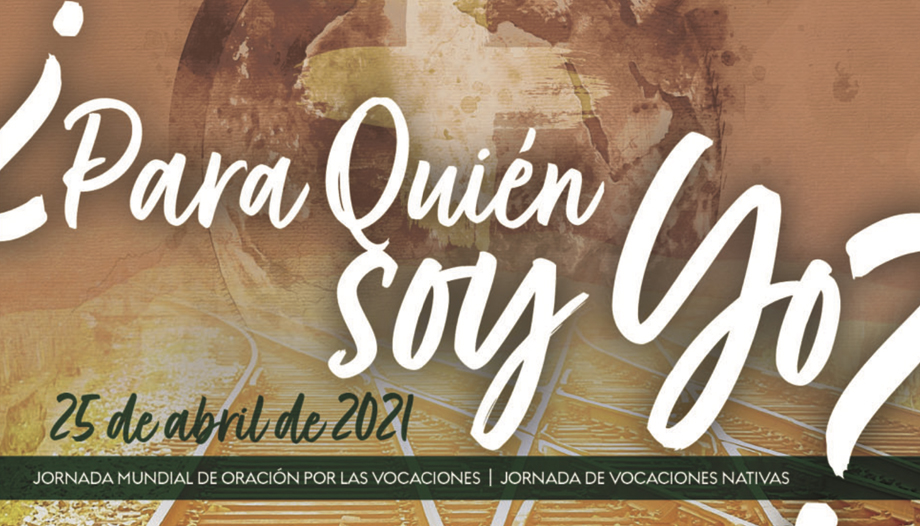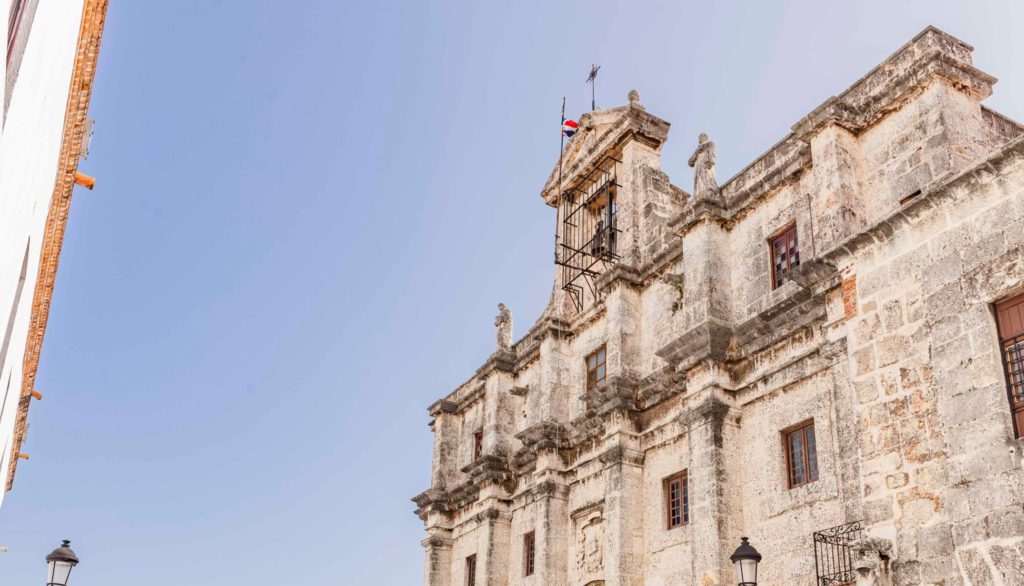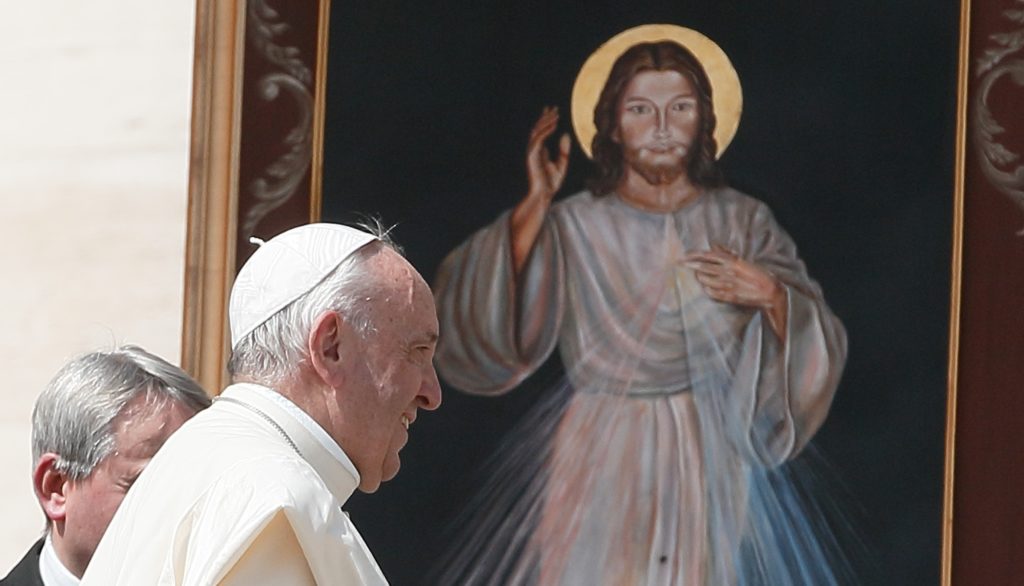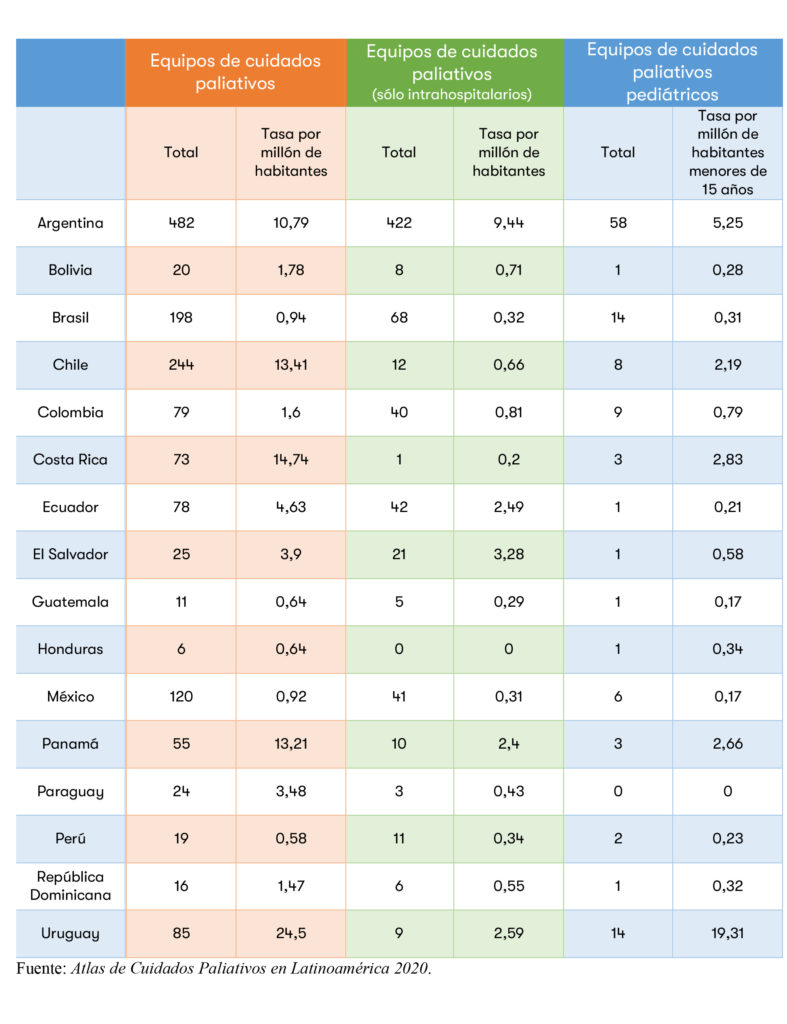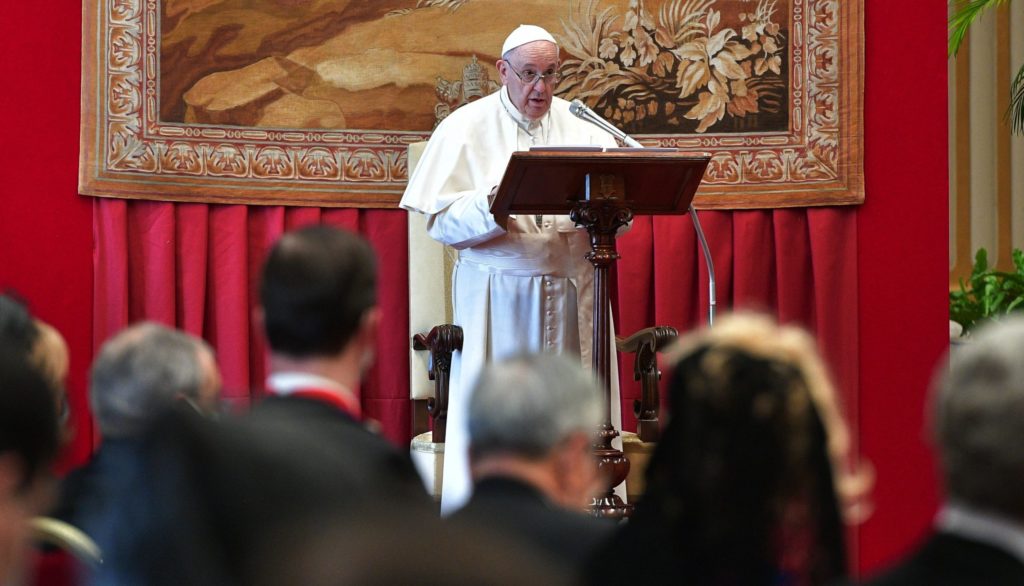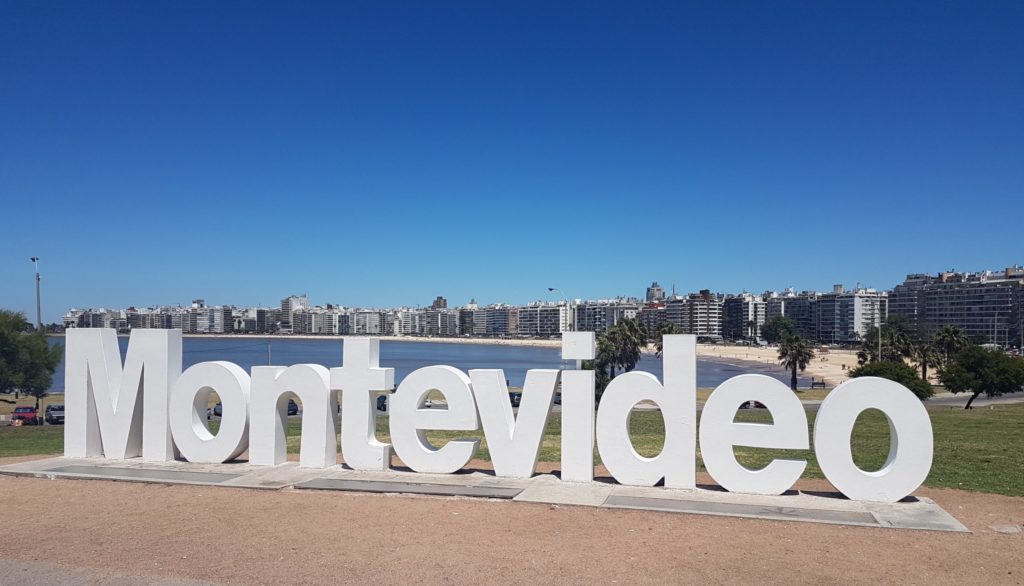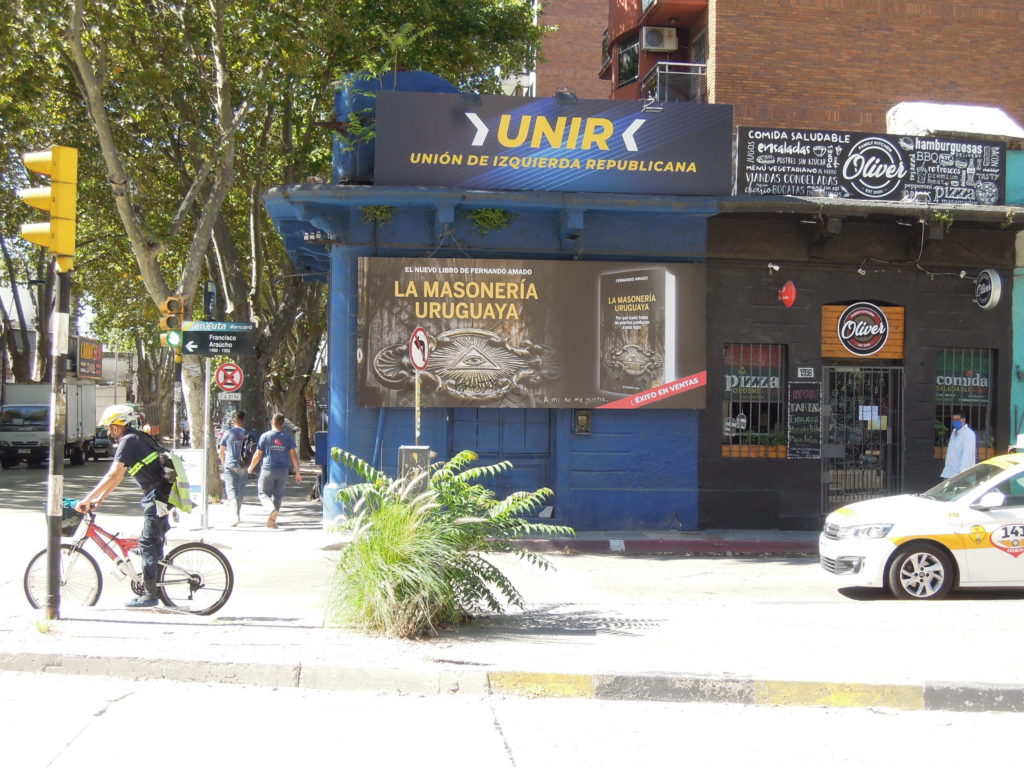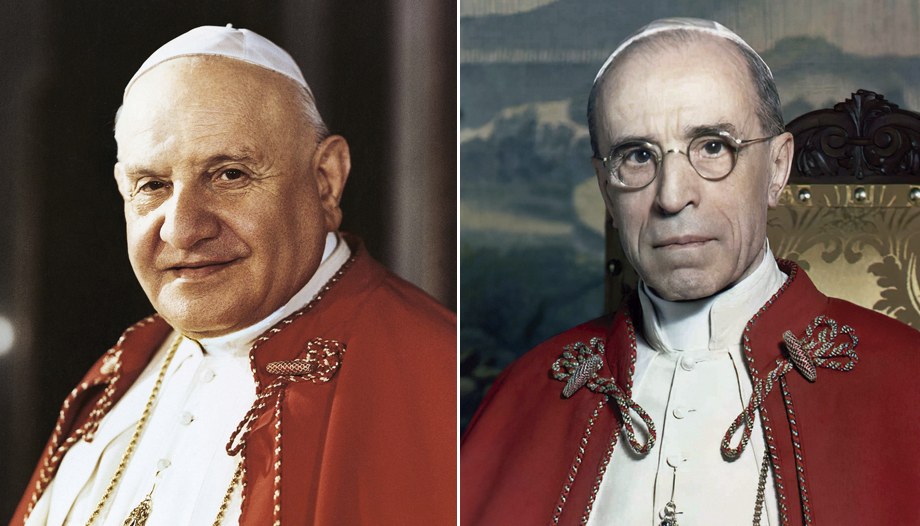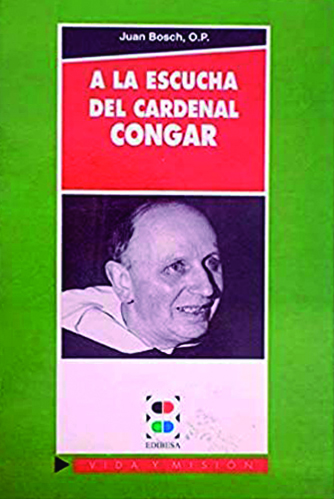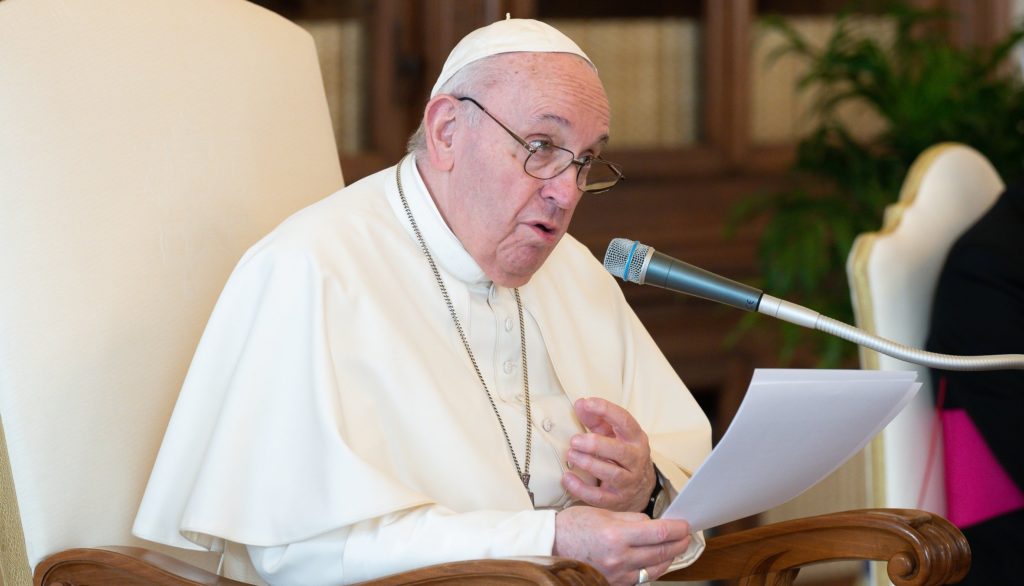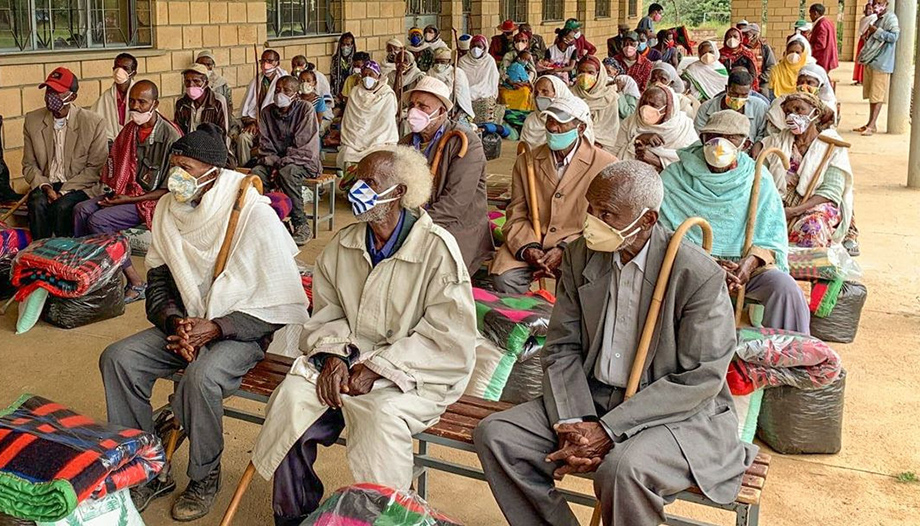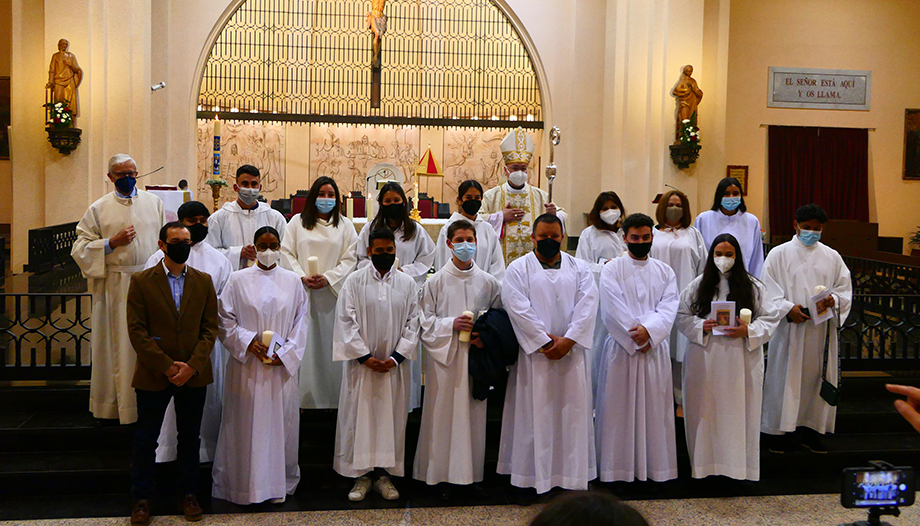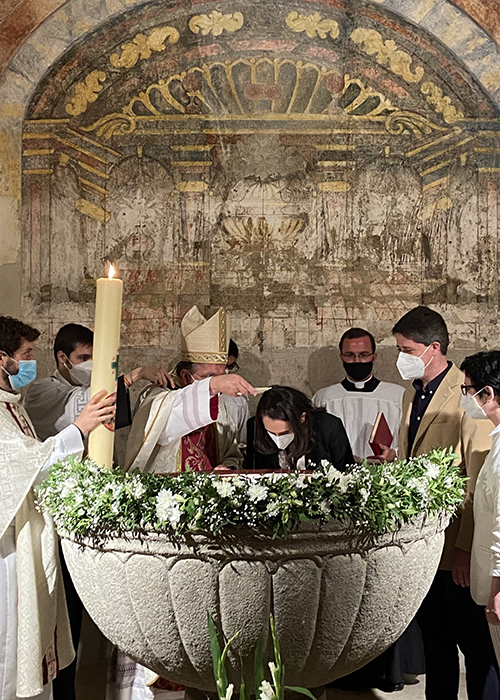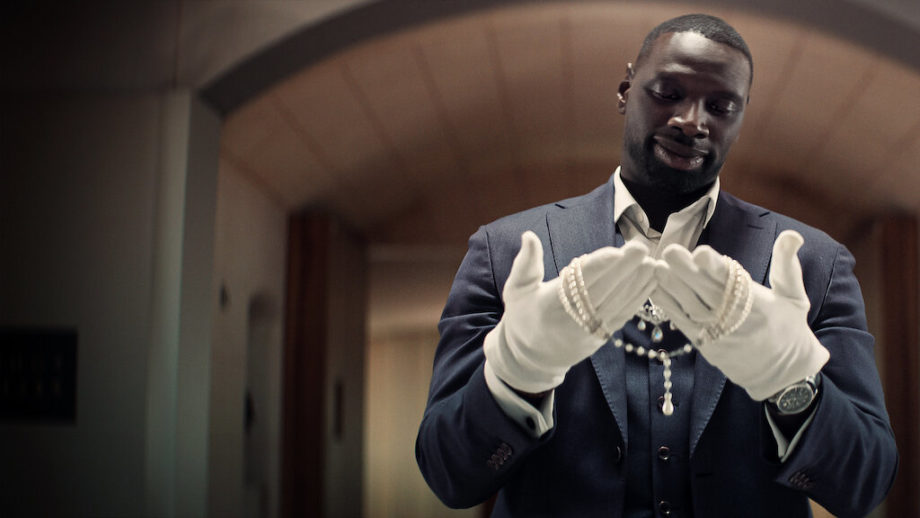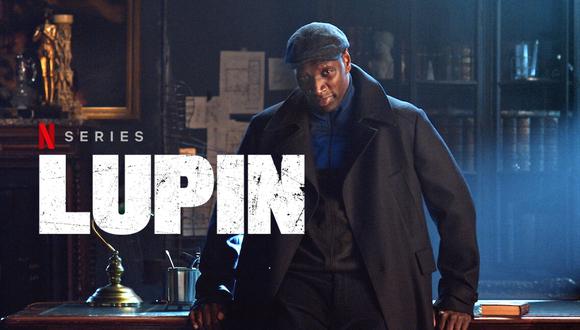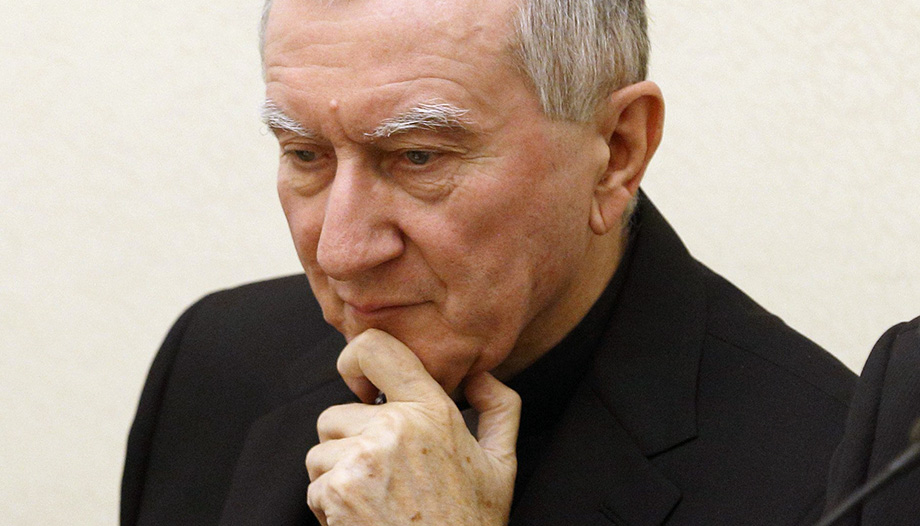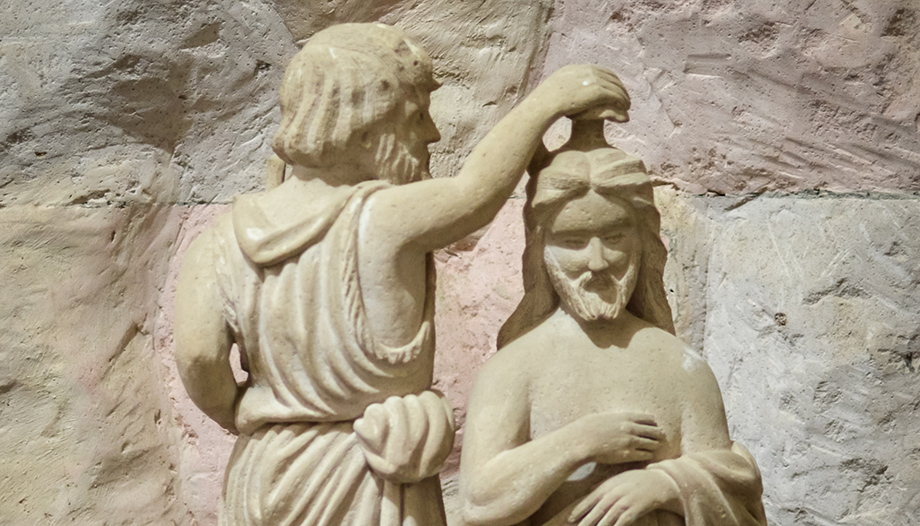The Swiss theologian Hans Küng died in Tübingen at the age of 93 after a long illness. He was a decisive figure in the theological panorama in the second half of the 20th century. Between 1960 and 1996 he taught at the University of Tübingen; in 1979 the Holy See withdrew his authorization to teach Catholic theology, because his teachings were contrary to defined truths of the faith. In the last thirty years Küng had focused on the promotion of dialogue between religions, for which he had given birth to the project "Ethos mundial". His books were widely distributed. His last major appearance was in spring 2018, at a scientific symposium convened by the "Weltethos" Foundation and the University to celebrate his 90th birthday.
His tensions with the Church were reflected, in turn, in his relationship with other contemporary theologians. Differences with Joseph Ratzinger, with whom he initially shared some research projects, did not prevent a friendship that Pope Emeritus Benedict XVI recovered when he received him in audience in Rome in 2005, which aroused great expectation.
Professor Pablo Blanco Sarto traces the twists and turns of this friendship, which also reflects the dilemmas of recent Catholic theology, especially in the German-speaking world.
A difficult friendship
Hans Küng (born in 1928 and died on April 6, 2021) and Joseph Ratzinger - one year older - were two young priests when they met in 1957 in Innsbruck to discuss theology in depth. Specifically, about Küng's doctoral thesis, on which Ratzinger had just written a review. Later they coincided at the Second Vatican Council, where they both worked as experts. There Küng was very well received by the media (it was his image that the Council meant opening the window to let fresh air in) and he was wearing revolutionary jeans. At that moment a long and committed friendship was born between the two.
The Swiss theologian had studied Sartre and Barth in Paris and Rome. In fact, he had written a thesis on Karl Barth, although curiously his writings would later drift towards the approaches of 19th century liberal Protestantism. This change of position would later separate the two theologians, although Ratzinger affirms: "I have never had a personal conflict with him, not by any stretch of the imagination" (The Salt of the Earth, p. 85).
Küng had initially dealt with ecclesiology, although his inquiries into the nature of the Church found certain differences with the teachings of the magisterium. He proposed a Church in which everything consists of pure historical becoming, with which everything can change depending on the various circumstances. If there is a stable form of Church that responds to its essence, he would continue to say, it is the charismatic and non-institutional form, prior to any possible clericalization. Thus, he will strongly oppose a hierarchical Church against the charismatic and true Church. Together with this, his later "universal ecumenical theology" will cause him to be denied the faculty to teach Catholic theology in 1979.
Ratzinger was at ease in Münster, in the north, and the council was finally over. "I began to love this beautiful and noble city more and more," Ratzinger says in his memoirs, "but there was one negative fact: the excessive distance from my homeland, Bavaria, to which I was and am deeply and intimately attached. I was homesick for the south. The temptation became irresistible when the University of Tübingen [...] called me to take up the second chair of dogmatics, which had recently been established. It was Hans Küng who had insisted on my candidacy and on gaining the approval of other colleagues. I had met him in 1957, during a congress of dogmatic theologians in Innsbruck [...]. I liked his pleasant frankness and simplicity. A good personal relationship was born, although shortly afterwards [...] there was a rather serious discussion between the two of us about the theology of the Council. But we both considered these as legitimate theological differences [...]. I found the dialogue with him extremely stimulating, but when his orientation towards political theology was outlined, I felt that the differences were growing and could touch on fundamental points" (My Life, pp. 111-112) as far as faith was concerned.
In the meantime, the Swiss theologian was on board a Alfa Romeo through the streets of Tübingen - that city with so much philosophical and theological tradition - at the same time that Ratzinger was cycling through them (cf. J.L. Allen, Cardinal Ratzinger, p. 91). "I began my classes in Tübingen already at the beginning of the summer semester of 1966, otherwise in a precarious state of health [...]. The faculty had a very high level of teaching staff, albeit somewhat inclined to polemics [...]. In 1967 we were still able to celebrate splendidly the one hundred and fiftieth anniversary of the Catholic faculty of theology, but it was the last academic ceremony in the old style. The cultural 'paradigm' with which the students and some of the professors thought changed almost with a flash. Until then, the way of reasoning had been marked by Bultmann's theology and Heidegger's philosophy; suddenly, almost overnight, the existentialist scheme collapsed and was replaced by the Marxist one. Ernst Bloch was then teaching in Tübingen and in his lectures he denigrated Heidegger as a petty bourgeois. Almost at the same time of my arrival, Jürgen Moltmann was called to the evangelical theological faculty, who, in his fascinating book Theology of hoperethought theology on the basis of Bloch. Existentialism was completely disintegrating and the Marxist revolution was spreading to the whole university" (My Life, pp. 112-113), including the Catholic and Protestant theology faculties. Marxism had taken over from existentialism.
The student revolt took over the classrooms. Ratzinger recalls the violence he witnessed in those years in Tübingen with genuine terror. "I have seen face to face the cruel face of this atheistic devotion, the psychological terror, the unbridled abandonment of all moral reflection - considered a bourgeois residue - where the only end was ideological. [...] I have experienced all this in my own flesh, because, at the time of the greatest confrontation, I was dean of my faculty [...]. Personally, I have never had any difficulties with students; on the contrary, in my courses I have always been able to speak to a good number of attentive assistants. It seemed to me, however, a betrayal to withdraw to the quiet of my classroom and leave the rest to others" (My Life, p. 114).
Someone spread the news that his microphone had once been taken away from him in one of his classes in Tübingen, to which the now Cardinal replied: "No, they never took the microphone away from me. Nor did I have any difficulties with the students, but rather with the activists who came from a strange social phenomenon. In Tübingen the lectures were always well attended and well received by the students, and the relationship with them was irreproachable. However, it was then that I became aware of the infiltration of a new tendency that - fanatically - used Christianity as an instrument in the service of its ideology. And that really seemed to me to be a real lie. [...] To be a little more specific about the procedures used at that time, I would like to quote some words recently recalled in a publication by a Protestant colleague, Pastor Beyerhaus, with whom I worked. They are quotations that do not come from a Bolshevik pamphlet of atheistic propaganda. They were published in flyers in the summer of 1969, to be distributed among the students of evangelical theology in Tübingen. The heading read: 'The Lord Jesus, guerrilla fighter', and went on to say: 'What else can the cross of Christ be but a sadomasochistic expression of extolling pain?' Or this one: 'The New Testament is a cruel document, a great mass superciliousness!' [...] In Catholic theology it did not go that far, but the current that was emerging was exactly the same. Then I understood that whoever wanted to remain progressive had to change his way of thinking" (The Salt of the Earth, 83-84).
Ratzinger continued with his intense teaching load. However, circumstances were to change significantly in the following years. One of his biographers recounts the recollections of one of his disciples: "Veerweyen began his training under Ratzinger in Bonn, then followed him to Münster, and finally to Tübingen, where he stayed with him until 1967. Veermeyen retains clear memories of Ratzinger in the classroom. 'He was an excellent teacher,' she recalls, 'both academically and didactically. Always very well prepared. Already in Bonn you could publish practically everything that came out of his mouth'. Veermeyen says that the courses in Bonn and Münster were always full. 'We students were proud of him, because he was one of the most important experts of the Second Vatican Council,' says Verweyen. According to him, the decline in Ratzinger's popularity began in 1967" (J.L. Allen, Cardinal Ratzinger, p. 105).
In those difficult years Ratzinger wrote one of his best-known books. "Since in 1967 the main course in dogmatics had been taught by Hans Küng, I was free to finally realize a project I had been cherishing for ten years. I dared to experiment with a course for students of all faculties, entitled Introduction to Christianity. From these lessons a book was born which has been translated into seventeen languages and reprinted many times, not only in Germany, and which continues to be read. I was and am fully aware of its limitations, but the fact that this book has opened a door for many people is a source of satisfaction to me" (My Life, p. 115).
This book is the beginning of what seemed to be a change, but in reality it is only a walk in the same direction. The environment had changed so much since the years when he started doing theology!
In the preface to the first edition, the then professor at Tübingen wondered whether theologians had not done the same thing that happened to Hans-with-Luck (never Hans Küng, he later clarified, cf. The Salt of the Earth, p. 85), when he exchanged all the gold he had for common trinkets. Indeed, perhaps at certain times something like this could have happened, he insinuates. Despite the obvious fraud, this has a positive aspect, since there are some advantages in the fact that gold has been related to trinkets. Theology would have come down from the clouds, but at times it had been content with mirrors and trinkets.
Winds of stormy weather were to blow over the Church. That 1966-the same year in which the incomplete Dutch Catechism-the traditional meeting of German Catholics, the KatholikentagThe first time in Bamberg, as in Essen two years later, there had been moments of great tension. Hans Küng will later publish Truthfulness for the future of the Church (1968), in which he reconsidered the figure of the priest and questioned celibacy. At the same time, a tough debate was opening around the encyclical Humanae vitaepromulgated that same year by Paul VI. In addition, several initiatives that went against the letter and spirit of the Council came to public light. The German Church, privileged with a very generous tax collection system, collaborated with missions and solidarity initiatives in the Third World. However, confusion among Christians was evident. Thus, progressives and conservatives, philomarxists and apolitical, 'papolaters' and Christians with an 'anti-Roman complex' debated among themselves continuously. Rahner wrote in 1972, judging the whole situation: "The German Church is a Church in which there is a danger of polarization" (K. Rahner, Transformazione strutturale della Chiesa come compito e come chance, Brescia 1973, p. 48).
On the other hand, the synod of German bishops in Würzburg (1971-1975) proposed total fidelity to the Council (cf. A. Riccardi, Europa occidentale, in AA.VV., La Chiesa del Vaticano II (1958-1978), Storia della Chiesa, XXV/2, San Paolo, Cinisello Balsamo 1994, pp. 392-396). "A council," Ratzinger said in 1988, "is an enormous challenge for the Church, for it gives rise to reactions and provokes crises. Sometimes an organism needs to undergo a surgical operation, after which regeneration and healing take place. The same happens with the Church and the Council" (Being Christian in the Neo-Pagan Age, p. 118). The years that followed were, therefore, confusing and difficult. In fact, in 1968, the same year in which Paul VI published the Humanae vitae, Joseph Ratzinger lived through and suffered the student revolts at the University of Tübingen (at the same time, however, he signed the Nijmegen Declaration, signed by 1360 theologians and addressed to the former Holy Office, calling for greater religious pluralism, cf. J.L. Allen, Cardinal Ratzinger, pp. 67-68). Two years earlier, Hans Urs von Balthasar had published CordulaThe first of these was a critique of the post-conciliar deviations from the very doctrine of the Council, especially from the theology of Karl Rahner. An open reaction to the progressive dogmas was beginning to form.
So in Balthasar there will be a turn and an evolution in his position, which will also be manifested in his works. The defense of the truth in the Church in this second moment will make him worthy of the cardinalate (although he died a few days before receiving it). So the Basel professor was still in a position to promote an ambitious initiative. "Balthasar (who had not been called to the council, and who judged with great acuteness the situation that had been created) sought new solutions that would bring theology out of the partisan formulas to which it tended more and more. His concern was to bring together all those who sought to do theology not from a set of prejudices derived from ecclesiastical politics, but who were firmly determined to work from its sources and its methods. Thus was born the idea of an international journal that was to operate on the basis of the communio in the sacraments and in the faith [...]. In fact, it was our conviction that this instrument could not and should not be exclusively theological; but that, faced with a crisis of theology born of a crisis of culture, [...] it should embrace the whole field of culture, and be published in collaboration with lay people of great cultural competence. [...] Since then, Communio has grown to be published today in sixteen languages, and has become an important instrument of theological and cultural debate" (My Life, p. 121).
He had been one of the founders of Concilium in 1965 (and that this magazine had now taken an anti-conciliar direction) will also be at this time at the beginnings of Communio. Ratzinger does not see it as a personal turning point. "It is not I who have changed, they have changed. From the first meetings I set two conditions for my colleagues. [...] These conditions [of service and fidelity to the Council], with time, became less and less present, until a change occurred - which can be placed around 1973 - when someone began to say that the texts of Vatican II could not be a point of reference for Catholic theology" (Being Christian in the Neo-Pagan Age, p. 118).
It had all started a few years earlier. "They were meeting in via Aurelia. It was 1969; Paul VI was still denouncing the 'self-destruction' of the Church, and Catholic intellectuals were still indifferent, dreaming of the Church of tomorrow. In that restaurant, a stone's throw from the Dome [of St. Peter's Basilica], sat Hans Urs von Balthasar, Henri de Lubac and Joseph Ratzinger. In front of a plate of spaghetti and a glass of good wine, the idea of a new international theological journal was born. In those stormy post-conciliar years, another journal was exerting its hegemony in the Church, Conciliumwhich emerged in 1965 and [now] in the hands of Küng and Schillebeeckx. It was necessary to counteract the progressive hegemony in the name of a new, more secure theology" (L. Brunelli, Presentation to Theologians of the Center, "30 Days" VI, 58-59 (1992) p. 48). Indeed, since Balthasar had not been able to participate in the council, this offered some advantages. "The distance from which Balthasar was able to observe the phenomenon as a whole conferred on him an independence and a clarity of ideas impossible to obtain if he had lived for four years at the center of the controversies. He saw the indisputable greatness of the conciliar texts and recognized it, but he also noticed that around them fluttered spirits of low rank who tried to take advantage of the atmosphere of the council to impose their ideas" (Theologians of the Center, "30 Days" VI, 58-59 (1992) pp. 48-49).
The ecclesial movement 'Communion and Liberation' also had a great deal to do with this initiative. "In the young people gathered around Monsignor Giussani [the new magazine] it found the impetus, the joy of risk and the courage of faith, which it immediately made use of" (Teologi di centro, p. 50). In this regard, Angelo Scola, later Patriarch of Venice and Archbishop of Milan, recalls: "The first time I saw Cardinal Ratzinger was in 1971. It was Lent. [...] A young professor of canon law, two theology student priests who at that time were not yet thirty years old, and a young editor were seated around a table, invited by Professor Ratzinger, in a typical restaurant on the banks of the Danube [...]. The invitation had been procured by von Balthasar with the intention of discussing the possibility of making the Italian edition of a journal that would later become the "Italian edition of a journal". Communio. Balthasar knew how to take risks. The same men who sat at the table of that typical Bavarian inn, a few weeks before, had disturbed his quietness in Basel, with a certain daring, because they did not know him. [So, at the end of our conversation, he said: 'Ratzinger, you must talk to Ratzinger! He is the man who is decisive for the theology of Communio. It is the key to the German edition. De Lubac and I are old. Go see Ratzinger. If he agrees ...'" (A. Scola, Introduction a My lifepp. 7-8).
However, if we go back for a moment to the late 1970s, we must remember that at that time a rarefied atmosphere had spread in part of the Central European Church. The controversy this time involved Hans Küng, an old acquaintance of the new archbishop. Already in 1977, the Swiss theologian had been summoned before the German bishops to discuss his book Being a Christian (1974), and it was then that he rejected Ratzinger as an interlocutor. Shortly afterwards, his former colleague in Tübingen was consecrated bishop, and later, in 1978, the German bishops thought they had reached an agreement with the controversial theologian. A year later, however, Küng went back on his word and again wrote in a less than serene manner about the infallibility of the pope. Ratzinger criticized this position, both on the radio and from the pulpit. The moves followed one after the other (cf. J.L. Allen, Cardinal Ratzinger, pp. 129-130).
On December 15, 1979, Hans Küng is banned from teaching Catholic theology. On the 31st of the same month, the Archbishop and Cardinal of Munich preached a homily in which he defended the "faith of the simple". Referring to the faith of the first Christians, which seemed to some to be too "simple", he affirmed: "It seemed to them an impossible naivety that this Jesus of Palestine was the Son of God, and that his cross had redeemed the people of the whole world. [...] So they began to construct their 'superior' Christianity, to see the poor faithful who simply accepted the letter as psychicsas people in a preliminary stage with respect to higher spirits, men over whom a pious veil had to be spread" (Against the Power of the Intellectuals, "30 Days" VI, 2 (1991) p. 68).
Ratzinger continued in his sermon on the LiebfrauendomIn the Munich Cathedral: "It is not the intellectuals who give the measure to the simple, but the simple who move the intellectuals. It is not the scholarly explanations that give the measure to the baptismal profession of faith. On the contrary, in its naive literalness, the profession of baptismal faith is the measure of all theology" (Against the Power of the Intellectuals, pp. 68-69). The creed knows more than theologians who ignore it. Therefore, "the magisterium is entrusted with the task of defending the faith of the simple against the power of intellectuals. [It has] the duty to become the voice of the simple, where theology ceases to explain the profession of faith in order to take it over. [To protect the faith of the simple, that is, of those who do not write books, speak on television or write editorials in newspapers: that is the democratic task of the Church's magisterium" (Against the Power of Intellectuals, p. 69). He concludes by recalling that the word of the Church "has never been kind and charming, as a false romanticism about Jesus presents it to us. On the contrary, it has been harsh and cutting, like true love, which does not allow itself to be separated from the truth and which cost it the cross" (Against the Power of the Intellectuals, p. 71).
Years later he would add about this controversial case: "Here a myth should be dismantled. In 1979 Hans Küng's authority to give doctrine in the name of and on behalf of the Church was withdrawn. This must not have pleased him at all. [However,] in a conversation we had in 1982, he himself confessed to me that he did not want to go back to his previous situation and that he had adapted very well to his new situation. status. [...] But that [=the prohibition to teach in the name of the Church] was not what he expected: his theology had to be recognized as a valid formula within Catholic theology. But instead of retracting his doubts about the papacy, he radicalized his position and distanced himself even further from the Church's faith in Christology and [in the doctrine] about the triune God" (The Salt of the Earth, p. 103). The Küng case seems to have profoundly marked Ratzinger's theological and pastoral vision.
In 2005 Castelgandolfo hosted a historic meeting between two theologians who had been at odds for decades: Hans Küng, an implacable critic of John Paul II, and Pope Benedict XVI. The meeting was described by Küng as a "hopeful sign". The "dissident" theologian acknowledged to the German daily newspaper Süddeutsche Zeitungwho asked for an audience weeks before with "the hope of being able to engage in a dialogue despite all the differences". The Pontiff answered him "quickly and in a very kind tone," says the former colleague of Joseph Ratzinger at the University of Tübingen. Ethics and human reason were discussed in the light of the Christian faith. Both Küng and Benedict XVI were aware that "there was no point in entering into a dispute about persistent doctrinal questions". For this reason, they avoided entering into points of conflict and steered the conversation in more amiable directions, dealing with particulars in which the Pope's vision and that of the theologian are in harmony. Küng assured that Benedict XVI was an "open and attentive listener". He added that "it was a mutual joy to see each other again after so many years. We did not embrace each other simply because we Germans are not as expansive as the Latins". Still under the effect of surprise, he acknowledged that "the Pope is open to new ideas", and clarified that Benedict XVI "is not a Pope who looks at the past, closed in on himself. He observes the situation of the Church as it is. He is capable of listening and of maintaining the attitude of the scholar or researcher".
The surprise of the Swiss theologian had already been experienced the previous July by a group of priests from the Aosta Valley, when Benedict XVI told them that "the Pope is infallible only on very few occasions", and acknowledged before them serious problems of the Church that previously were not mentioned in public and even less in an informal gathering. Hans Küng had previously sent the Pope his latest book on the origin of life and documents on his plans to define a world ethic based on the moral principles of the great religions. To his delight, Benedict XVI "declared himself very happy that a theologian is addressing these questions in Germany, because he knows that they are very important. And in the Vatican communiqué he mentions that he appreciates my work". By mutual agreement, they did not discuss conflicts with Rome but only future projects, but the mere fact that Benedict XVI received him for two hours at Castelgandolfo and invited him to dinner "is a sign of hope for many men of the Church".
 Image pedagogy
Image pedagogy The University of Navarra publishes an audio book of the Bible
The University of Navarra publishes an audio book of the Bible "I wanted to explain what it's like to feel like a foreigner in a big city."
"I wanted to explain what it's like to feel like a foreigner in a big city."